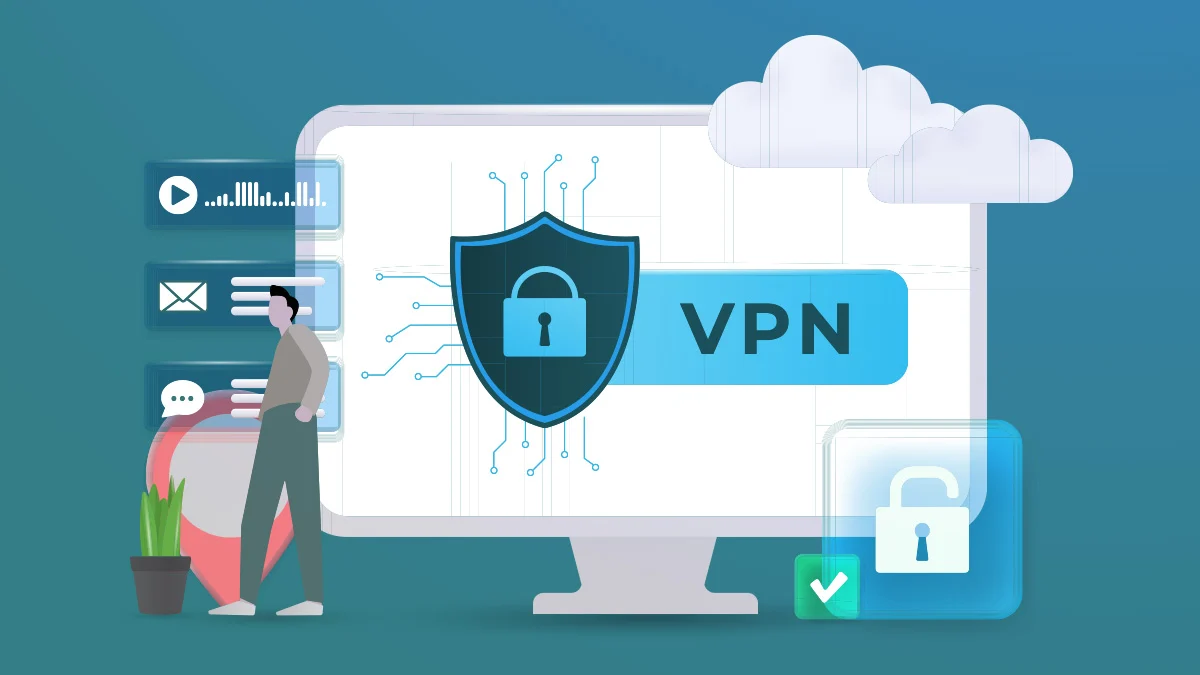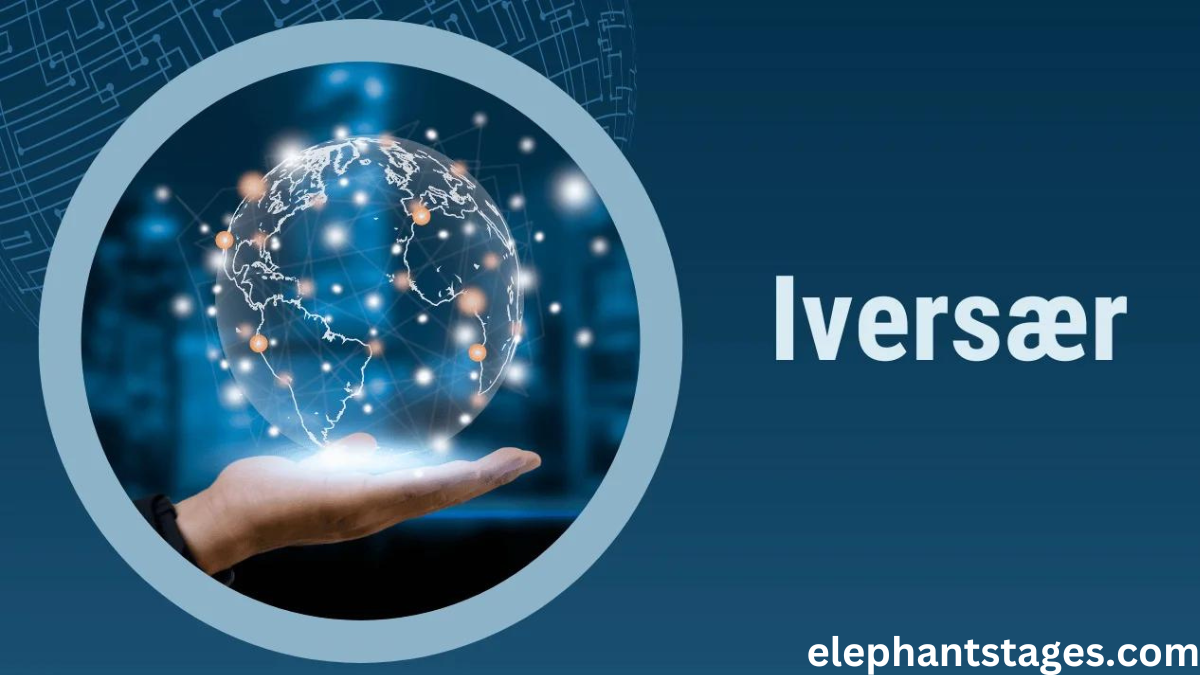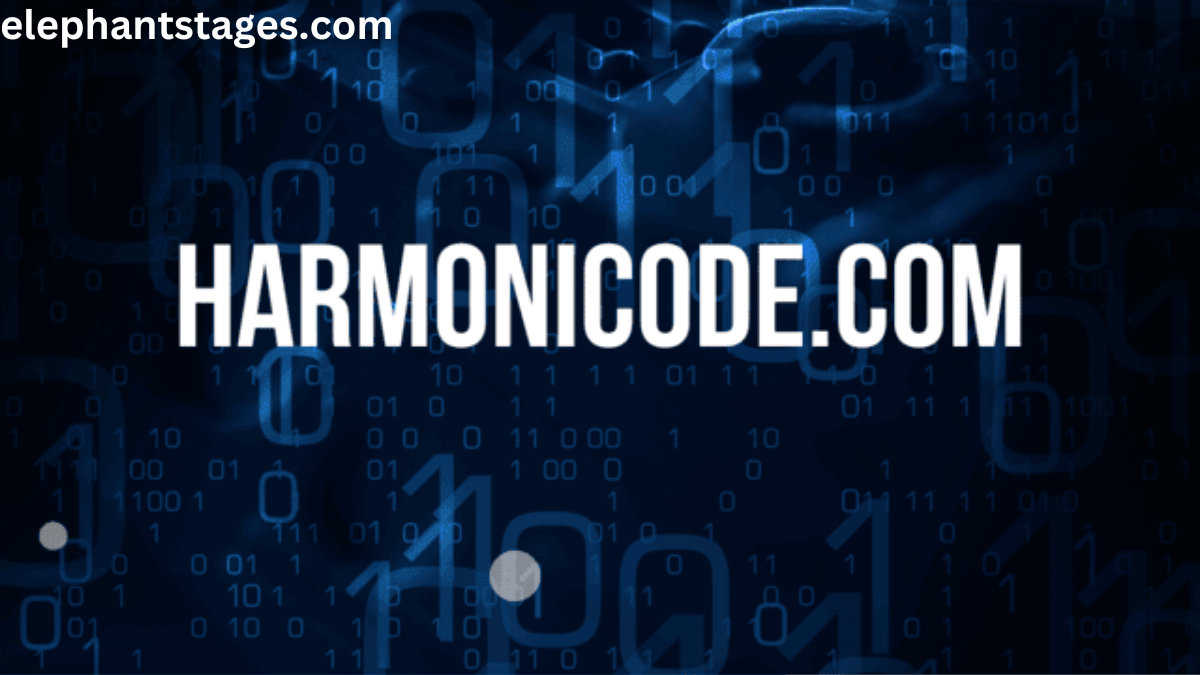Tech
The Benefits of Using VPNs for Online Security and Privacy

Key Takeaways:
- VPNs offer enhanced online security by encrypting data.
- They promote privacy by masking user IP addresses.
- Individuals and businesses alike can benefit from VPNs.
What is a VPN?
A VPN is a technology that allows users to securely access the Internet by encrypting their data and masking their IP addresses. Understanding how VPNs function can help users realize their significance in upholding online privacy and security. This innovation establishes a secure private network over the public Internet, providing extra privacy and protection. VPNs are advantageous for connecting to public Wi-Fi networks in cafes, airports, or hotels, where security may be at risk.
How VPNs Enhance Online Security
How VPNs work? VPNs play a crucial role in online security. By encrypting data, they prevent hackers from intercepting sensitive information. Encryption is essential for online banking or shopping, where personal and financial details are exchanged. When data is encrypted, it is transformed into a complex code that is difficult for unauthorized individuals to decode. Recent studies have shown that cyber-attacks are increasing, making the protection offered by VPNs even more essential. As hackers use more sophisticated techniques, the robust security measures provided by VPNs become increasingly vital in protecting users’ online activities.
Privacy Benefits of VPNs
In addition to security benefits, VPNs also offer substantial privacy advantages. VPNs prevent websites and advertisers from tracking online activities by hiding a user’s IP address. It can help avoid targeted advertisements and safeguard against data extraction. Advertisers and data brokers frequently rely on IP addresses to create user profiles, risking privacy.
Using a VPN allows individuals to surf the web anonymously, making it more difficult for others to attribute their online actions to them. This is especially advantageous in nations with stringent internet censorship and surveillance, where individuals using the Internet are at a higher risk of encountering privacy violations.
VPN Usage for Individuals
For individuals, VPNs offer peace of mind when browsing the Internet. Whether streaming content, working remotely, or simply surfing the web, a VPN ensures your data remains private and out of reach from prying eyes. Many streaming services restrict content based on geographical locations, and a VPN can help bypass these restrictions, providing access to the desired content regardless of location.
Working remotely has become more prevalent, and VPNs enable secure access to work resources from home or anywhere. This secure connection means that sensitive information, such as work emails and documents, can be accessed without the risk of interception by malicious entities.
VPN Usage for Businesses
Businesses can reap significant advantages from the use of VPNs. With the increasing prevalence of remote work, VPNs offer a secure method for employees to access company resources from any location worldwide. This guarantees the protection of sensitive company data, irrespective of where employees are situated.
VPNs can help businesses comply with data protection regulations, reducing the risk of data breaches and related financial penalties. Additionally, VPNs facilitate secure communication within the organization, allowing teams to collaborate seamlessly while maintaining data security. This is crucial for businesses that deal with sensitive client data, financial records, or proprietary information.
Choosing the Right VPN
There are many VPN services available, each offering different features. When choosing a VPN, consider security protocols, server locations, speed, and customer support. Reading reviews and doing thorough research can help you select the best VPN to meet your needs.
It is crucial to seek out VPNs with a no-log policy, indicating they do not retain any details regarding your internet behavior. This guarantees that your data stays safe if the VPN provider is breached. Specific VPNs provide extra functions like safeguarding against malware and blocking ads, which improves security and enhances the browsing experience.
Common Misconceptions About VPNs
Several misconceptions exist about VPNs, such as the belief that they are only necessary for tech-savvy individuals or significantly slow down internet speed. VPNs are user-friendly, and the speed impact is often minimal, depending on the service chosen. Many VPN providers offer user-friendly interfaces that make it easy for anyone to set up and use their services.
Another common misconception is that VPNs are only needed for illegal activities. While VPNs can help conceal one’s identity, their primary purpose is to enhance online security and privacy for legitimate users. This includes protecting personal information from cyber threats and maintaining privacy in an increasingly monitored online landscape.
The Future of VPNs
As cyber threats change, VPNs have a promising future. Expected technological developments will lead to more secure and efficient VPN services, solidifying their importance for personal and professional purposes. The rise of technologies like quantum computing could introduce fresh obstacles in online security, pushing VPN providers to innovate to stay ahead of these constantly changing threats.
As awareness about online privacy and security continues to grow, the adoption of VPNs is expected to increase, ultimately creating a safer internet environment for everyone. With a greater understanding of the importance of safeguarding one’s online presence, the demand for robust and reliable VPN services will continue to surge. This escalating demand will drive further advancements in VPN technology, ensuring users enjoy a secure and private online experience.
Tech
Iversær – The Intricate Tapestry of Humanity

Introduction
In a world teeming with diverse cultures, unique perspectives, and varying backgrounds, the term “iversær” comes to the forefront as a beacon of unity and understanding. But what does iversær signify? How does it intertwine with the broader themes of diversity, inclusion, and human connection? This guide explores the essence of iversær, its real-world applications, and its potential to shape a vibrant and inclusive future.
Define “iversær”
Iversær is a concept that encapsulates the beauty of diversity, the richness of individual uniqueness, and the importance of fostering a sense of belonging among all people. Rooted in the idea that every person contributes to the intricate tapestry of humanity, iversær embraces differences as strengths rather than obstacles.
The Essence of Iversær
Core Values and Principles
At its core, iversær embodies values such as:
- Inclusivity: Welcoming all individuals irrespective of their backgrounds.
- Respect: Honoring the differences and unique qualities of each person.
- Empathy: Understanding and sharing the feelings of others.
- Equity: Ensuring fair treatment, opportunities, and advancement for all.
Importance of Individual Uniqueness
Every individual’s uniqueness contributes to a richer, more vibrant society. Recognizing and celebrating these differences fosters a sense of belonging and community, empowering people to bring their full selves to every aspect of life.
Contribution to Society
Iversær contributes to society by:
- Enhancing Creativity and Innovation: Diverse perspectives lead to more creative solutions and innovative ideas.
- Strengthening Communities: Inclusive communities are more cohesive, resilient, and supportive.
- Promoting Social Harmony: Understanding and empathy reduce conflicts and build stronger relationships.
Iversær in Action
Real-world Examples
- Communities: Neighborhoods that celebrate diverse cultural festivals, encouraging cross-cultural interactions.
- Organizations: Companies implementing diversity and inclusion programs that promote a diverse workforce.
- Cultures: Countries with policies supporting multiculturalism and integration.
Case Studies
- Tech Industry: Companies like Google and Apple investing in diversity initiatives, resulting in innovative products and inclusive work environments.
- Education Sector: Schools adopting inclusive curricula that reflect the diverse backgrounds of students, fostering a culture of acceptance and mutual respect.
Challenges and Opportunities
- Challenges:
- Resistance to Change
- Unconscious Bias
- Inequality and Discrimination
- Opportunities:
- Creating Inclusive Policies
- Promoting Cross-cultural Understanding
- Leveraging Technology for Inclusivity
Cultivating Iversær
Strategies for Individuals
- Self-Education: Learn about different cultures, histories, and perspectives.
- Active Listening: Listen to understand, not just to respond.
- Inclusive Behavior: Practice inclusivity in daily interactions, both personally and professionally.
Promoting Iversær in Organizations
- Inclusive Hiring Practices: Ensure diverse representation in the hiring process.
- Employee Resource Groups: Support groups that represent various demographics within the organization.
- Ongoing Training: Provide continuous education on diversity, inclusion, and equity.
Role of Education and Awareness
- Inclusive Curriculum: Integrate diverse perspectives into educational content.
- Awareness Campaigns: Run campaigns to educate the public about the importance of diversity and inclusion.
- Community Engagement: Involve communities in dialogues and activities that promote iversær.
Iversær and the Future
Shaping a Better World
The potential of iversær to shape a better world lies in its ability to bring people together, bridging gaps and fostering understanding. By championing diversity, we can create a more equitable and harmonious society.
Emerging Trends and Innovations
- AI and Inclusion: AI tools that help mitigate biases in hiring and decision-making processes.
- Global Collaboration: International partnerships focusing on global challenges through diverse perspectives.
Call to Action
Become a champion of iversær. Start by making small changes in your daily life, advocating for inclusivity in your community, and supporting policies that promote diversity and equity.
FAQs
1. What does “iversær” mean?
Iversær is a term that represents the celebration of diversity, inclusivity, and the unique qualities of each individual.
2. How can I promote iversær in my workplace?
You can promote iversær by implementing inclusive hiring practices, supporting employee resource groups, and providing ongoing training on diversity and inclusion.
3. Why is iversær important in education?
Iversær in education fosters a culture of acceptance and mutual respect, helping students appreciate diverse perspectives and build empathy.
4. What are some real-world examples of iversær?
Examples include diverse cultural festivals in communities, diversity initiatives in organizations like Google, and inclusive curricula in schools.
5. How can technology support iversær?
Technology can support iversær by providing AI tools that reduce biases, facilitating global collaboration, and offering platforms for inclusive communication.
YOU MAY ALSO LIKE
Ultimate Guide to Rssawee for Environmental and Adventure Enthusiasts
Conclusion
In summary, iversær is not just a concept but a way of life that enriches our society. By understanding its essence, witnessing its impact in action, and actively cultivating it in our lives, we can contribute to a world where everyone feels valued and included.
Tech
Harmonicode: Unveiling the Mystery of Music Through Play

Introduction
Have you ever wondered how music is created? Is there a secret code that unlocks the magic of melodies? If these questions pique your curiosity, you’re in for a treat! Enter Harmonicode, a revolutionary product that makes learning music theory fun and engaging for all ages. Whether you’re an environmental enthusiast, an adventure lover, or a small business owner, Harmonicode has something to offer.
What is Harmonicode?
Category and Price
Harmonicode belongs to the Games category and is currently priced at US$120.00. The good news? It’s in stock and ready to bring a world of musical discovery right to your doorstep.
Functionality
Harmonicode is designed to teach music theory concepts in a playful and interactive way. It’s both a physical and digital product, offering a unique blend of tactile and online learning experiences. It transforms what can often be a dry subject into a fun, engaging activity.
Target Audience
Harmonicode is perfect for:
- Aspiring musicians of all ages
- Individuals who want to understand the building blocks of music
- Teachers looking for innovative ways to engage students
- Families wanting to learn together
How Does Harmonicode Work?
Gameplay/Usage
Harmonicode can be used as a game, a puzzle, or a musical instrument simulation. Here’s how to get started:
- Unbox Your Harmonicode Kit: Inside, you’ll find a set of beautifully designed cards and access to the Harmonicode digital platform.
- Setup: Follow the instructions to set up your physical or virtual game space.
- Begin Playing:
- Music Theory Fundamentals: Learn scales, chords, and intervals through interactive challenges.
- Interactive Gameplay: Engage with puzzles that require you to apply music theory concepts to progress.
- Track Progress: Use the built-in progress tracker to monitor your learning.
Key Features
Harmonicode stands out because of its unique features:
- Teaches Music Theory Fundamentals: Covers scales, chords, intervals, and more.
- Interactive and Engaging Gameplay: Keeps users motivated and eager to learn.
- Suitable for Various Skill Levels: Whether you’re a beginner or more advanced, Harmonicode adapts to your level.
- Additional Features:
- Progress tracking
- Challenges and rewards
- Community interaction
Benefits of Using Harmonicode
Enhanced Musical Understanding
- Strong Foundation: Develop a solid understanding of music theory.
- Skill Improvement: Improve your composition and performance skills.
- Deeper Appreciation: Unlock a deeper appreciation for music by understanding its building blocks.
Fun and Engaging Learning
- Less Intimidating: Makes learning music theory less daunting and more fun.
- Motivational: Interactive gameplay keeps you engaged and motivated.
- Family Activity: Suitable for all ages, making it a great family activity.
Social Proof and Credibility
User Testimonials
Don’t just take our word for it—here’s what some of our satisfied users have to say:
- Steve, USA: “I can’t believe that Harmonicode is free! It’s ideal for making sure all of my work is polished and professional.”
- Penny, Australia: “I use this product almost every day! The complex rephrasing component complements grammar products like Grammarly and LanguageTool really well. Great job!”
Awards and Recognition
Harmonicode has received several industry awards for its innovative approach to music education, reinforcing its credibility and effectiveness.
FAQs
- What is Harmonicode?
- Harmonicode is an interactive product designed to teach music theory concepts in a fun and engaging way, suitable for all ages and skill levels.
- How much does Harmonicode cost?
- Harmonicode is priced at US$120.00 and is available in stock, ready to bring musical discovery to your doorstep.
- Who is the target audience for Harmonicode?
- Harmonicode is perfect for aspiring musicians, individuals wanting to learn music theory, teachers, and families looking for a fun, educational activity.
- What features does Harmonicode offer?
- Harmonicode offers music theory fundamentals, interactive gameplay, progress tracking, challenges, rewards, and community interaction.
- How does Harmonicode enhance musical understanding?
- By providing a strong foundation in music theory, improving composition and performance skills, and fostering a deeper appreciation for music.
YOU MAY ALSO LIKE
Engaging Dental Websites: Best Practices for Attracting and Retaining Patients
Conclusion
Recap the Value Proposition
Harmonicode is not just a tool; it’s a gateway to unlocking the mysteries of music theory through play. With its interactive gameplay, comprehensive learning modules, and suitability for all ages, it’s the perfect addition to any music enthusiast’s toolkit.
Tech
Kannák – The Epitome of Strength and Functionality

Introduction
Imagine a world where every tool, every piece of equipment, and every resource you use embodies the perfect balance of strength and functionality. What if there were a term that encapsulated this ideal? Enter Kannák.
What is Kannák?
Kannák, pronounced “kan-ak,” stands as a testament to the fusion of power and utility. Though the term may be unfamiliar to some, its implications are universally relevant. Kannák represents not just physical robustness, but also the relentless efficiency and effectiveness needed to overcome challenges and achieve success.
The Essence of Kannák
Strength
Physical Attributes
- Durability: Kannák is built to last. Whether it’s withstanding the harshest weather conditions or enduring rigorous use, Kannák remains unyielding.
- Resilience: Beyond mere durability, Kannák can bounce back from setbacks, maintaining its integrity and functionality.
- Resistance: Kannák is designed to resist wear and tear, corrosion, and other forms of degradation.
Metaphorical Strength
- Symbol of Power: Kannák isn’t just about physical strength. It symbolizes the power to push through obstacles and achieve greatness.
- Courage: Embodying Kannák means having the bravery to face challenges head-on.
- Determination: With Kannák, there’s an unwavering commitment to reach goals, no matter the difficulty.
Functionality
Practical Applications
- Versatility: Kannák can be used in various contexts, from everyday tools to specialized equipment.
- Efficiency and Effectiveness:
- Optimal Performance: Kannák delivers results with minimal effort and maximum impact.
- User-Friendly: Even the most complex versions of Kannák are designed for ease of use.
Kannák in Various Domains
Kannák in Adventure Gear
For adventure enthusiasts, Kannák could be the defining trait of their gear.
- Backpacks:
- Strength: Reinforced stitching, durable materials.
- Functionality: Multiple compartments, ergonomic design.
- Tents:
- Strength: Weather-resistant fabrics, sturdy poles.
- Functionality: Easy setup, compact storage.
Kannák in Small Business Tools
Small business owners often seek tools that exemplify Kannák.
- Software Solutions:
- Strength: Robust security features.
- Functionality: Intuitive interfaces, comprehensive analytics.
- Marketing Tools:
- Strength: Reliable servers, high uptime.
- Functionality: Customizable templates, user-friendly dashboards.
Kannák and Related Concepts
Comparisons
How Kannák differs from similar terms/products:
- Quality vs. Quantity:
- Kannák focuses on excellence, ensuring each product or resource is of the highest quality, whereas quantity-focused options may prioritize volume over value.
Complementary Elements
What enhances the capabilities of Kannák:
- Technological Integrations:
- Smart Features: IoT (Internet of Things) can enhance Kannák products, providing real-time updates and remote control capabilities.
- Sustainable Practices:
- Eco-Friendly Materials: Using materials that are both strong and environmentally friendly enhances the overall value of Kannák.
The Future of Kannák
Innovations
- Advanced Materials:
- Nanotechnology can further enhance the strength and durability of Kannák products.
- AI Integration:
- Predictive Maintenance: AI can predict when a Kannák product needs servicing, ensuring it remains functional for longer.
Trends
How Kannák aligns with current or future trends:
- Sustainability:
- Eco-conscious consumers are increasingly demanding products that are not only strong and functional but also environmentally responsible.
- Customization:
- Personalized Solutions: The future of Kannák includes bespoke products tailored to individual needs and preferences.
Five Most Searched FAQs on Google and Answers
- What does Kannák mean?
- Kannák symbolizes the perfect balance of strength and functionality, combining physical robustness with relentless efficiency.
- How is Kannák applied in adventure gear?
- In adventure gear, Kannák is embodied through features like reinforced stitching in backpacks and weather-resistant fabrics in tents.
- Why is Kannák important for small business tools?
- Small business tools with Kannák offer robust security and user-friendly interfaces, ensuring reliability and efficiency.
- What innovations enhance Kannák products?
- Innovations like nanotechnology and AI integration enhance the strength, durability, and predictive maintenance of Kannák products.
- How is Kannák related to sustainability?
- Kannák aligns with eco-conscious trends by using strong, environmentally friendly materials, catering to the growing demand for sustainable products.
YOU MAY ALSO LIKE
Why RAID Remains a Preferred Choice for Modern Data Centers
Conclusion
Kannák stands as a beacon of strength and functionality, applicable across various domains and essential for overcoming life’s challenges. From adventure gear to small business tools, Kannák ensures optimal performance and durability. As we look to the future, innovations in material science and technology will only enhance Kannák’s relevance and impact.
-

 News3 months ago
News3 months agoWhat Are the Biggest Challenges in Marine Construction Projects in Australia?
-

 Health4 months ago
Health4 months agoUnderstanding Ftmç: Gender-Affirming Surgery
-

 Fashion3 months ago
Fashion3 months agoAttractive Beach Dresses: Elevate Your Look with These Ideas
-

 Tech3 months ago
Tech3 months agoAiyifan: Unveiling the Genie of Technological Revolution
-

 Business3 months ago
Business3 months agoHow Professional Concrete Cleaning Wins Repeat Business
-

 Tech4 months ago
Tech4 months agoThe Ultimate Guide to the Geekzilla Podcast: Diving into the Heart of Geekdom
-

 Pets2 months ago
Pets2 months agoPawsitively Perfect: The Types of Dog Harness Bundle for Your Furry Friend
-

 Health3 months ago
Health3 months agoDesk Job Dilemma: Tips for Back Pain Relief
